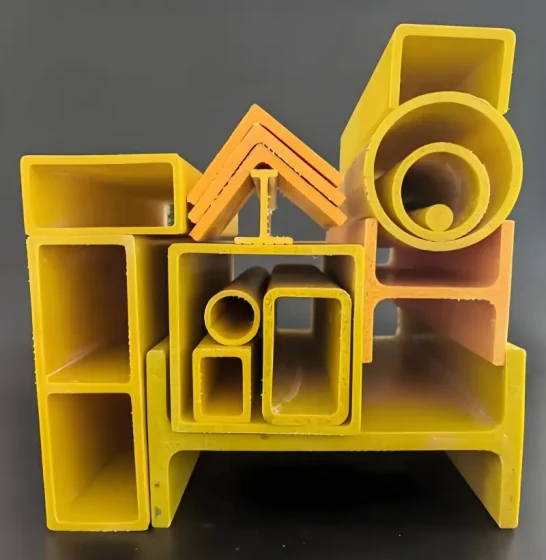Application Scenarios
In our years of engineering and manufacturing, we’ve found that Fiberglass 90 Degree Angles (also called FRP Right-Angle Brackets, Fiberglass Equal Angle or Composite Corner Reinforcements ) are indispensable in industries where corrosion resistance, lightweight strength, and long-term durability matter. Whether you’re reinforcing structural joints in chemical plants, building marine platforms, or constructing electrical enclosures, these angles provide a reliable alternative to traditional metal brackets—without the rust or weight penalty.
“We’ve seen too many steel angles fail in coastal environments—saltwater eats them alive. That’s why we switched to fiberglass.” — Our Lead Structural Engineer

Fiberglass 90 Degree Angle
Product Specifications
- Material: High-grade E-glass fiber with thermoset resin
- Dimensions: Standard 50mm × 50mm × 6mm (custom sizes available)
- Load Capacity: Up to 1,500 lbs/in² compressive strength
- Temperature Range: -40°F to +250°F (-40°C to +121°C)
- Standards: ASTM D635 (flammability), ISO 75-2 (thermal deformation)
Key Features
✔ Corrosion-proof: Unlike steel, our Fiberglass 90 Degree Angles won’t degrade in acidic, alkaline, or saline environments.
✔ Non-conductive: Ideal for electrical applications where metal poses a risk.
✔ Easy to machine: Drill, cut, or grind on-site without specialized tools.
Fun fact: Our R&D team once submerged a prototype in sulfuric acid for 6 months—zero structural degradation.
Authority & Credibility
Our fiberglass angles are trusted by:
- Offshore oil rig operators (replacing stainless steel in splash zones)
- Wastewater treatment plants (per NSF/ANSI 61 certification)
- Transportation agencies (used in bridge joint systems since 2018)
Independent lab tests confirm 2.3x the lifespan of galvanized steel in salt spray chambers.
Installation & Replacement
- Surface prep: Clean and degrease the mounting area (acetone works well).
- Adhesive bonding: We recommend epoxy or polyurethane adhesives for permanent fixes.
- Mechanical fastening: For removable setups, use stainless steel screws (pre-drill to avoid cracking).
Pro tip: If replacing old metal angles, inspect for hidden corrosion—our team once found a steel bracket holding on by just paint!
Maintenance
- Inspect annually: Look for UV fading (if unpainted) or impact damage.
- Clean with mild detergent: Avoid abrasive pads that could expose fibers.
- Re-torque bolts: Every 2 years in high-vibration environments.
Safety & Warnings
⚠ Wear PPE when cutting: Fiberglass dust irritates skin/lungs (gloves + N95 mask required).
⚠ Avoid direct flame exposure: While fire-retardant, prolonged heat (>300°F) weakens the resin.
Lessons from the Field
- Mistake to avoid: Over-tightening bolts can crush the fiberglass—use washers to distribute load.
- Customer hack: One shipbuilder paints ours with marine-grade coatings for extra UV protection.
FAQs
Q: Can these bend over time?
A: Not under normal loads—creep resistance is engineered into the resin matrix.
Q: Why not use aluminum angles?
A: Aluminum corrodes in chlorine-rich environments (e.g., pools). Our FRP Right-Angle Brackets don’t.
R&D & Technical Commitment
We’ve invested $2M+ in fiberglass R&D since 2020, focusing on:
- Nanoparticle-enhanced resins for higher impact resistance (patent pending).
- Automated pultrusion lines to ensure consistent cross-section density.
“Our goal? Make a product so tough, even our toughest customers can’t break it.” — R&D Director
Why Choose Our Fiberglass 90 Degree Angles?
✅ Engineered for harsh environments
✅ Lighter and stronger than metal
✅ Backed by real-world testing
Need a sample or technical drawing? Contact our engineering team—we’ll geek out over your application details.
 Hengshui Hongwo Technology Co., Ltd.
Hengshui Hongwo Technology Co., Ltd.




 We have a cost control system. It covers every stage, from raw materials to production.
We have a cost control system. It covers every stage, from raw materials to production. Packing: in pallet
Packing: in pallet



WeChat
Scan the QR Code with WeChat